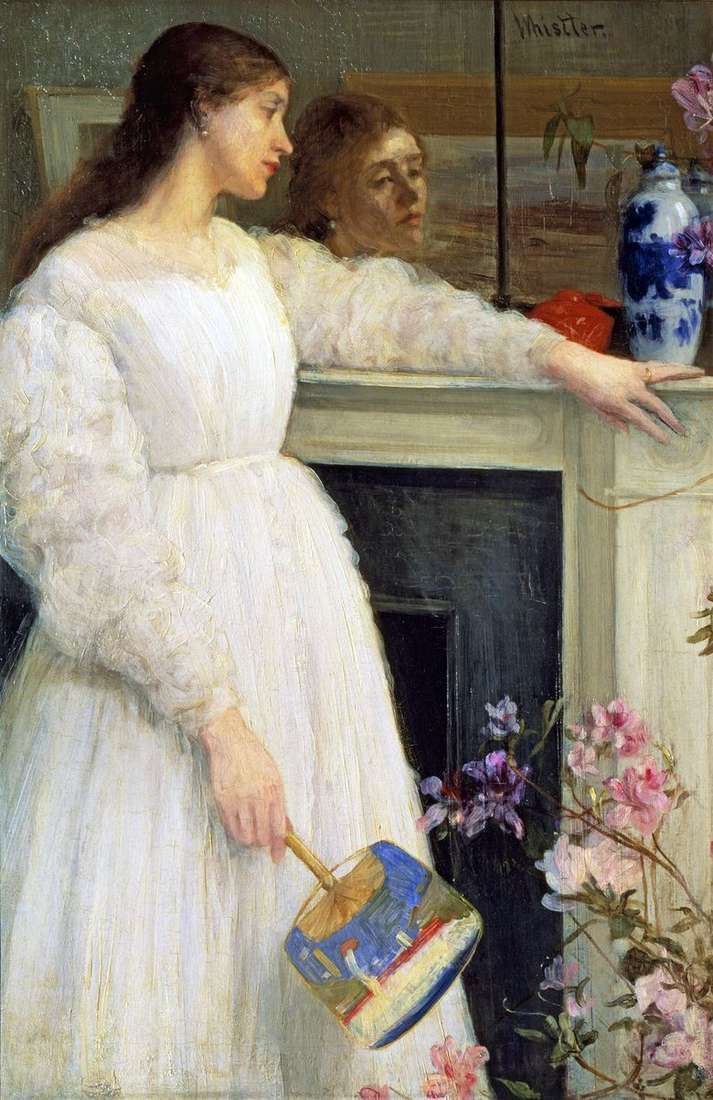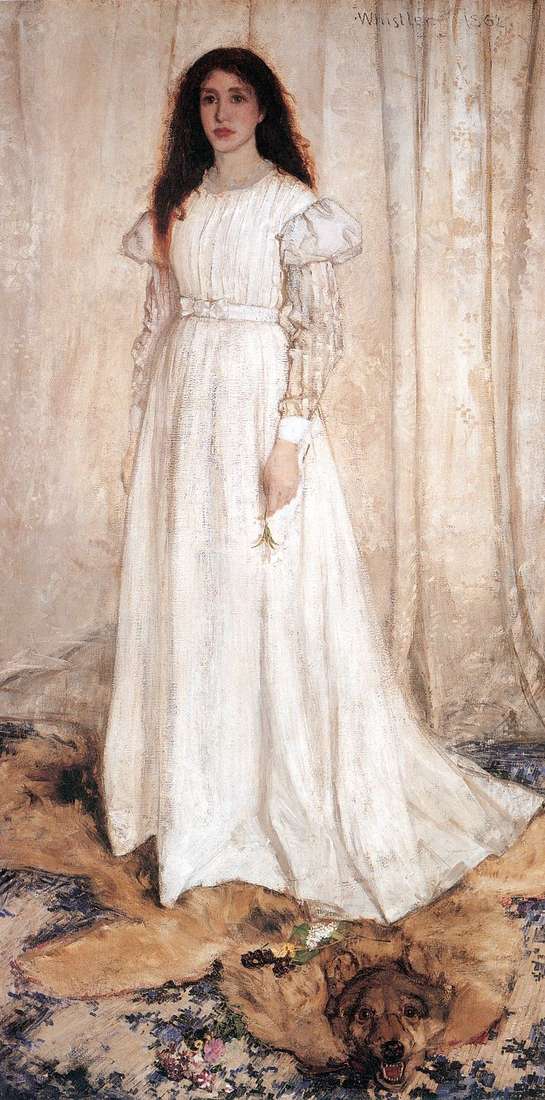
American artist James Whistler, like the impressionists, wanted to capture on canvas that subtle and so beautiful moment with which the real world is so rich. Sharing the doctrine of Charles Baudelaire about synaesthesia, he found in this process much in common with listening to music. By analogy with them, the artist gave his works unusual names like “Symphony” or “Improvisation”, and the special musicality of the images was emphasized by the flexibility of the lines and the smooth color transitions.
Despite the fact that the work of Whistler is close to Impressionism, it is difficult to attribute it to this school. He was, rather, an original artist: he liked to experiment and synthesize techniques from various directions and currents, not giving himself entirely to any of them.
A gentle and touching composition “Symphony in White No. 1: a girl in white” – this is one of their three nocturnes depicting girls in light clothing. The painting, exhibited in the Salon of the Outcasts in 1863, caused laughter and jeers of critics. The audience did not accept such an extraordinary painting.
The artist posed Irish Joanna Hiffernan. For her, this work as a model was a debut. Whistler admired Joanna and her red hair to such an extent that, while working on the canvas “Wapping”, he dreamed of continuing to paint a portrait as soon as possible. Subsequently, the spectacular Irish became his lover.
The wolfish grin is discordant with the general mood of the picture and contrasts with Joanna’s sad and slightly frightened face. Lily in the hands of the girl symbolizes a symbol of purity and nobility.
 Symphony in White No. 2: A Girl in White by James Whistler
Symphony in White No. 2: A Girl in White by James Whistler Symphony in White No. 3 by James Whistler
Symphony in White No. 3 by James Whistler Harmony in gray and green: a portrait of Miss Cecily Alexander by James Whistler
Harmony in gray and green: a portrait of Miss Cecily Alexander by James Whistler Peacock. Tiffany Workshop by James McNeill Whistler
Peacock. Tiffany Workshop by James McNeill Whistler Symphony in White No. 2: una chica de blanco – James Whistler
Symphony in White No. 2: una chica de blanco – James Whistler Mother’s portrait by James Whistler
Mother’s portrait by James Whistler Nocturne: Le Solent by James Whistler
Nocturne: Le Solent by James Whistler Sinfonía en blanco Nº 1: una chica de blanco – James Whistler
Sinfonía en blanco Nº 1: una chica de blanco – James Whistler